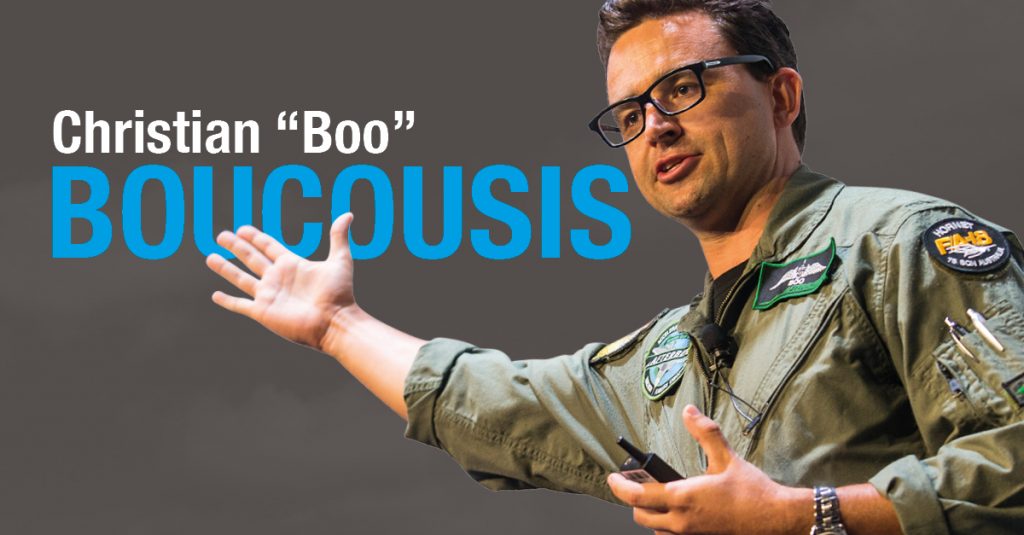Keeping your plan to reality
Pilots’ have a mantra: ‘Brief the plan, fly the brief.’ The brief is the mission; the mission is the brief. Pilots want to feel that their mission has run like a well-scripted, well-rehearsed play: with great timing from every actor, stagehand, and musician; no missed lines; quick recovery from any left-field glitches; each participant having an irresistible energy for getting the job done and done well. If at the end of a mission a pilot can say ‘It went according to plan’, it’s a happy day. It’s also a rare one, for plans rarely survive contact with reality. The reasons are infinite, but logically, it’s because: the plan was not so good in the first place; someone didn’t know the plan; someone hasn’t followed the plan; or reality has dramatically changed. Follow a high performance framework like Flex to plan–brief–execute–debrief and you’ll address the first three of these risks in turn. But what about the inevitability of change. How do we keep our plan wedded to reality?
Gaps between the plan and its execution
Regardless of where you operate – the boardroom, the showroom, the storeroom, or the war room – plans have to be adapted because the reality of a situation changes. If you know how reality will change, you’re smarter and perhaps more divine than most and your plan will reflect that. (In fact, many changes you will have foreseen, and included in the contingencies of your flexible plan.) But if you’re human, Flex may help.
Flex accepts that as reality changes, the plan changes. Is that a bad thing? If a sinkhole opens up in the road in front of you, do you drive on regardless?
Let’s go back to the philosophy behind Flex. It’s aiming for flawless execution, not flawless planning. You don’t have to obsess about the plan being perfect, because it’s the execution that matters. However fast or good your planning, a plan is accurate only for the minute it’s made. It will keep changing until captured in the moment of time that is the brief, and then it will continue to change.
So, how do we keep our plan to reality? Every plan should include team check-in points, an execution rhythm of regular X-Gap reviews to analyze the gap between the plan and its execution. Each X-Gap (short for ‘execution gaps’) is a decision point for the mission: continue, adjust, or abort? Green light, yellow, or red? If reality changes between X-Gaps, your plan will change too.
Why have X-Gap meetings?
Keeping on top of what’s happening is the driving reason for our X-Gap meetings, but not the only one. People forget things. (There, we said it. It’s out there.) People don’t always do what they plan to do. (Truth is hard.) People are more likely to do things when they’ve committed to do so to someone else. People don’t like facing people when they haven’t met that commitment.
People are more likely to do things when they’ve committed to do so to someone else. People don’t like facing people when they haven’t met that commitment
Accountability
You get the picture. There is simply no better way—without going off on vigilante fantasies—to hold people to their part of the plan. As well as keeping things on track, X-Gap meetings hold people accountable. The plan is who does what and when, and nobody can hide if something’s not done. Whether it’s an honest oversight or a shirked responsibility, the plan will have to change. You’ll be able to head off small problems before they snowball and become big ones. You’ll also know there’s an internal threat that might have to be managed in future plans. Working through those issues builds teamwork and mutual respect.
Build Culture
X-Gap meetings also underscore the leader’s intent and desire for the mission. Just as the brief is the moment for a leader to stamp a personality on the mission, an X-Gap is the time to reset that personality. Every emphasis a leader makes and the mood they create in an X-Gap helps build the team’s culture. The leader is restating their responsibility for the plan and its delivery.
Adjust Courses of Action
I found plenty of opportunities to reset the plan and take responsibility for it on the journey with my company Mode to build a seventeen-story hotel using innovative modular construction. The idea and plan seemed sound—as sound as something that’s never been done before could be—but it turned out to have a few gaps. Prime among them was the building material.
The concept originated in Papua New Guinea, to control building costs in a place with devastating material and labour cost inflation. Mode used steel boxes, fabricated offshore or in a PNG factory, which could be placed like LEGO blocks to build up the structure. The problem came in transferring the technology to Australia, a country where the building codes and fire standards were based on concrete construction. Yet the architect, structural engineers, and fabricators at a regular X-Gap could quickly set a plan to find a solution.
The ultimate decision? Mode elected to abandon years of research and engaged an Australian builder of smaller prefabricated buildings, and together they designed and built their hotel. It was a tough decision, leaving behind all that technology and investment capital on the shelf, however we still achieved our mission objective: owning and building a great hotel for less cost than traditional building techniques.
Fighter pilot missions are briefed and flown on the same day. That’s their execution rhythm, and they stick to that rhythm for as long as their strategy demands. Business missions take longer. If they’re longer than a week, don’t wait for reality to change to call an X-Gap meeting. Make it a regular event and create your execution rhythm.
 Christian “Boo” Boucousis is an author, entrepreneur, ex RAAF fighter pilot and the CEO of Afterburner Australia – high performance corporate training, team building and motivational keynote speakers. Email Christian directly boo at afterburner.com.au
Christian “Boo” Boucousis is an author, entrepreneur, ex RAAF fighter pilot and the CEO of Afterburner Australia – high performance corporate training, team building and motivational keynote speakers. Email Christian directly boo at afterburner.com.au
The post Keeping your plan to reality appeared first on Afterburner Australia.
source https://www.afterburner.com.au/strategy-execution-process-x-gap/









